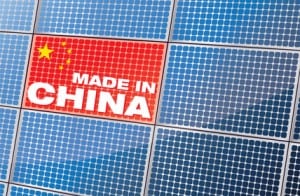 ‘Made in China 2025.’
‘Made in China 2025.’
Have you heard the phrase? We certainly have. It’s the official ten year plan to transform Chinese manufacturing, published in May this year.
Manufacturing drives the Chinese economy. In recent times, it’s facing major change. Rising labour costs. A shift from labour-intensive tasks to hi tech production. Plus there’s the growing Chinese middle class, so manufacturing is looking at domestic markets as well as export.
Key Elements of Made in China 2025
The Made in China 2025 initiative has been compared to Germany’s Industry 4.o, which was adopted in 2013. But there are some key differences.
Germany starts from a base of hi tech manufacturing. Quality is consistent. There’s a high level of automation and robotics. The German initiative is about harnessing IT, especially the internet, so that companies can network and innovate globally.
China starts from a very different point. There are efficient, high quality manufacturers in China – we know, we find them for our clients! But overall, quality is uneven. China has more challenges than Germany. So Made in China 2025 is broader in scope.
- It pushes quality over quantity in production.
- It seeks sustainable development. (We all know about air pollution in China!)
- It focuses on innovation.
- It aims to structure Chinese industry more efficiently.
This includes developing local supply. While China has plenty of hi-tech manufacturing, much of it is actually assembly. Key components often come from overseas. For example, China spent US$210 billion importing integrated circuits in 2014. That’s more than it spent on oil!
Producing chips and circuits locally would truly transform China’s manufacturing. One goal of Made in China 2025 is to raise domestic content of core components and materials. Targets are 40% by 2020 and 70% by 2025.
The plan calls for market investment more than government funding. And it focuses on meeting international standards rather than domestic ones. China is still interested in export!
Focus industries of Made in China 2025
While the plan addresses all of China’s manufacturing, 10 industry sectors get priority.
- New advanced information technology.
- Automated machine tools & robotics. China already accounts for 20% of global robot sales. The world’s first fully automated factory has opened in Dongguan.
- Aerospace and aeronautical equipment.
- Maritime equipment and high-tech shipping.
- Modern rail transport equipment. China is making a name for itself in high speed rail.
- New-energy vehicles and equipment.
- Power equipment.
- Agricultural equipment.
- New materials.
- Biopharma and advanced medical products.
Implications for companies sourcing from China
China is hoping to challenge hi tech manufacturing in the West, Japan and Korea. If you’re in hi tech, there could be good opportunities. However, keep a careful eye on specification and quality control. New domestic parts manufacturers could be a quality risk otherwise.
What about low tech sectors? China exports are still driven by clothing, shoes, toys and furniture. Government subsidies and support for these sectors have decreased. Labour costs are rising. Manufacturers are under pressure. When choosing a supplier, it’s more important than ever to conduct a thorough factory audit. Make sure your supplier is financially stable as well as capable.
In short, the basics of sourcing haven’t changed. It’s just a matter of paying extra attention to risk points. That’s what the Hornet sourcing process does. So our clients have peace of mind.
One other aspect of the plan is developing human talent in China. Skilled staff can create more efficient processes. That’s one way to combat higher labour costs. China wants to keep costs low. If Made in China 2025 delivers productivity gains, that will be a win-win.
For more information on Made in China 2025, or about sourcing from China in general, contact Hornet.
